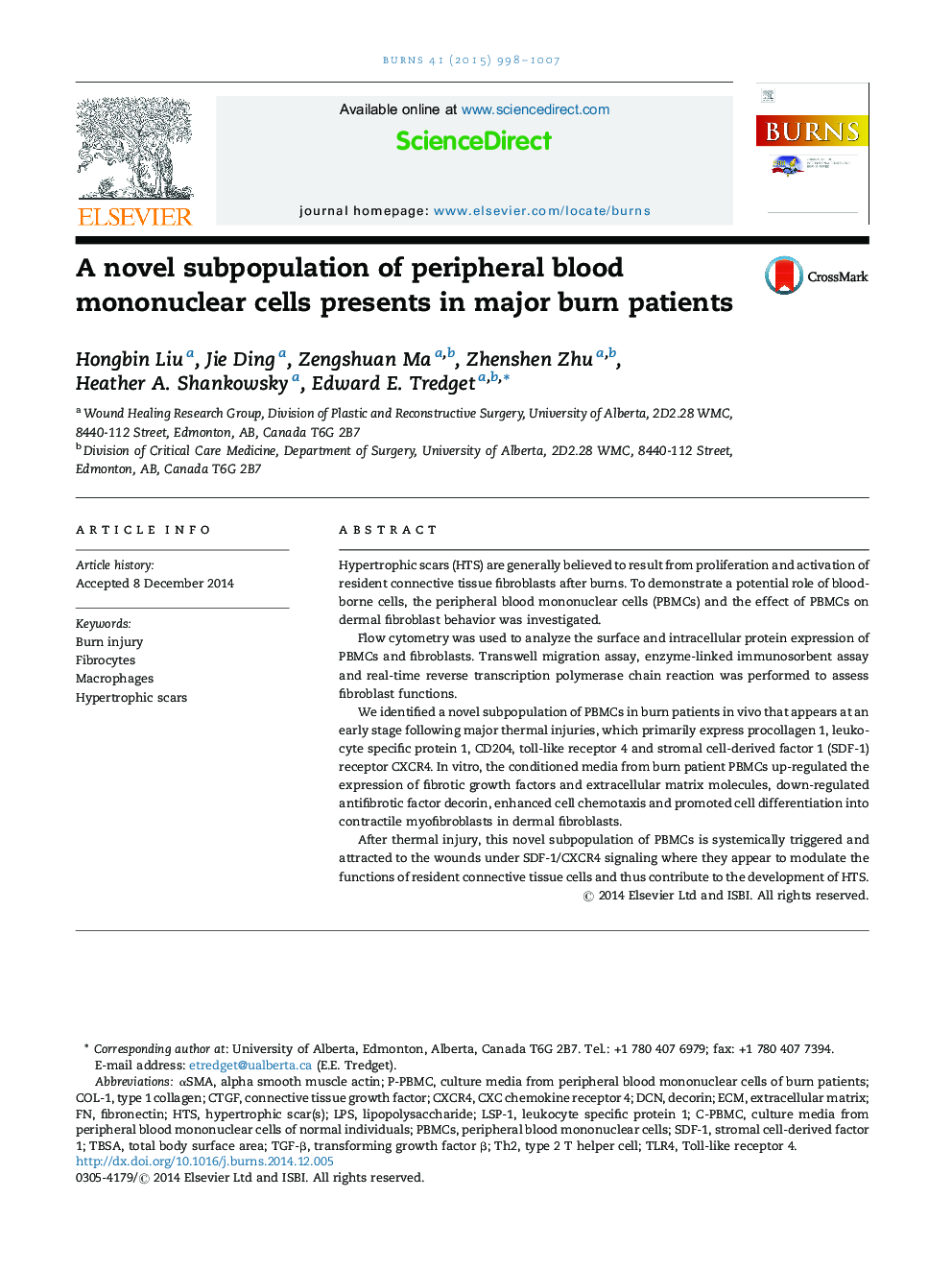| Article ID | Journal | Published Year | Pages | File Type |
|---|---|---|---|---|
| 6048682 | Burns | 2015 | 10 Pages |
â¢A subset of PBMCs found at early stage following major thermal injury.â¢It is a mixture of fibrocytes and M2 macrophages expressing TLR4 and CXCR4.â¢Culture media from total PBMCs of these patients regulate fibroblasts to fibrosis.
Hypertrophic scars (HTS) are generally believed to result from proliferation and activation of resident connective tissue fibroblasts after burns. To demonstrate a potential role of blood-borne cells, the peripheral blood mononuclear cells (PBMCs) and the effect of PBMCs on dermal fibroblast behavior was investigated.Flow cytometry was used to analyze the surface and intracellular protein expression of PBMCs and fibroblasts. Transwell migration assay, enzyme-linked immunosorbent assay and real-time reverse transcription polymerase chain reaction was performed to assess fibroblast functions.We identified a novel subpopulation of PBMCs in burn patients in vivo that appears at an early stage following major thermal injuries, which primarily express procollagen 1, leukocyte specific protein 1, CD204, toll-like receptor 4 and stromal cell-derived factor 1 (SDF-1) receptor CXCR4. In vitro, the conditioned media from burn patient PBMCs up-regulated the expression of fibrotic growth factors and extracellular matrix molecules, down-regulated antifibrotic factor decorin, enhanced cell chemotaxis and promoted cell differentiation into contractile myofibroblasts in dermal fibroblasts.After thermal injury, this novel subpopulation of PBMCs is systemically triggered and attracted to the wounds under SDF-1/CXCR4 signaling where they appear to modulate the functions of resident connective tissue cells and thus contribute to the development of HTS.
